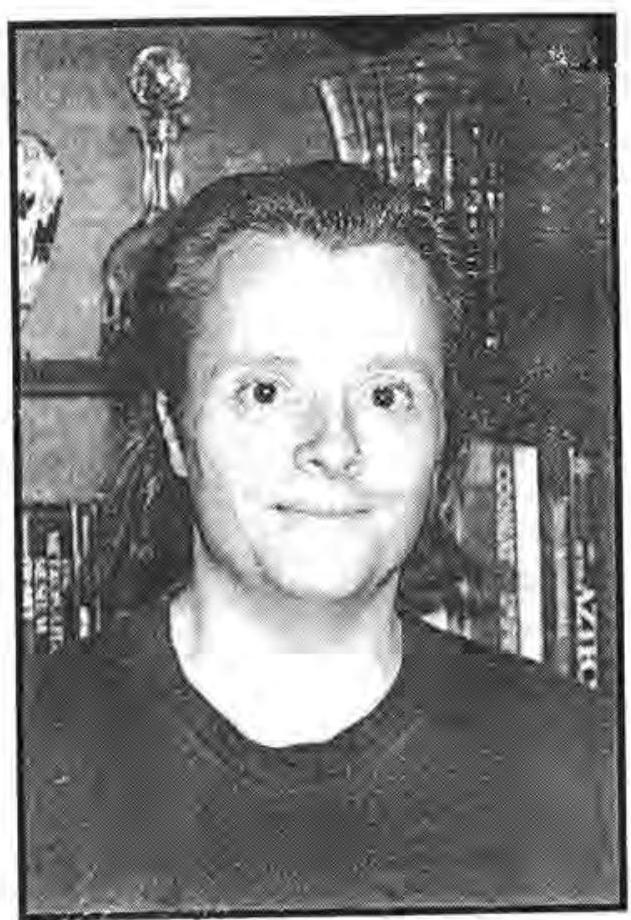In all the groups that I've participated in throughout my life, whether educational, political, artistic, professional and even ones based on mere conviviality, the undermining elements of factionalism, ego conflicts and various other differences have interfered with achieving a lasting sense of genuine conspiracy. Originating in the shadow sides of our psyches and hidden by our facile personas, these factors serve to discourage healthy and effective group functioning on many levels, in terms of achieving consensus, creating viable solutions to problems and gaining clarity of visionary goals/objectives for the group.
Why, in spite of sharing common interests, political, socioeconomic and humanitarian values, are we unconsciously antagonistic towards the groups we choose to be a part of? What kinds of subjective reluctance do we harbor in fully contributing ourselves to the group consciousness? James Hillman observes that, "the Self is the interiorization of community." Yet what exactly prevents us from reaching the Self, the ultimate core of the psyche and experiencing truly universal communion with others?
My experiences with persistent group dysfunction prompted me to develop a dreamwork technique which I call "Integrative Dream Narration" (IDN). I first tried IDN on a class of art students who, myself included, could not fully cooperate with one another in a way conducive to our spiritual, artistic and intellectual well being. I had each participant write a dream synopsis on a notecard, emphasizing the use of symbolic, transformative dreams concerning wholeness, i.e., getting in contact with the Self. I then combined the dreams to create a collective story which all could listen to and participate in, since each individual dream contributed to the cohesiveness of the narration.
The inherent fluidity of dreams became much more apparent, for I did not have to struggle to synthesize the dreams as they seemed to coalesce on their own accord, like tributaries flowing naturally into a river and then into the communal ocean. Instead of assuming the role of an improviser or story I was more like a mediator of the unconscious mind of the group.
When I finished the story, class members sat in peaceful silence. The narration had encouraged a shared consciousness amongst us. We all seemed to be open to one another and breathing together in the true sense or conspiracy. No one was prompted to speak right away. We all enjoyed this feeling of being fully present, instead of just pretending to be together under the guise of a shared interest. None of us, it seemed, needed to follow the impulses of our egos to rationalize and explain the experience away. During the rest of the class, we were able to come to a consensus as to how the remainder of the semester would be navigated and actually came up with a syllabus which all agreed upon.
I have since employed Integrative Dream Narration to enhance the integrity of many different collectives - from musical and spiritual to political - with very effective, though never predictable, results. Many of the resistances we have toward surrendering to a group consciousness - resistances deeply rooted in fear - loosen up and a newfound integrity is created.
The word, "Integrity" has its etymological meaning: "entire, untouched, unmarred, an original state." What has so thwarted the success of many different groups, I feel, has been the inability to recognize the sense of entirety and originality that is always present, if only subliminally. For example, the Australian Aborigines considered Alcheringa or Dreamtime to be the original state of the world prior to the arrival of human beings. Dreamtime was the world in its unmarred entirety (the Self).
IDN serves to facilitate a contact with the primordial community, encouraging an experience of interrelatedness that helps to diminish many anxieties and isolating/ alienating effects that are often deliberately promoted in consumerist societies. A holistic communication, both in speaking, listening and feeling, becomes possible once the collective dream matrix is brought into awareness and utilized, when it is substantially grounded in the body politic, so to speak. Since many illnesses- both the somatic and psychic- are induced and prolonged by blockages, encouraging the opening up of communicative channels on all levels allows mind, body and spirit to align themselves to a healing sensibility. This is true not only from within oneself but from within others as well. IDN influences and heightens one's awareness of shared experiences - of the subtle body - that are for the most part rooted in unconsciousness and remain unrecognized by most of us. Especially when we spend so much of our time maintaining our protective personas when amongst others and outside of the comfortable circle of our families and friends.
Dreams in themselves have a fluid, autonomous quality to them. We are constantly astonished by what our unconscious minds can create. The word influence has its origins in the word fluid. Directing the current of dreams towards communal integrity can greatly enhance the success and effectiveness of small group functioning and its influence upon our collective environment. The profound sense of inter-relatedness evoked by IDN has its basis in synchronicity, or the merging of outer and inner events to create meaning. To paraphrase it in Jungian terms, IDN evokes synchronicities as a result of the dreams being combined. On an intuitive level, awareness of synchronicity becomes heightened, in not only the narrator but the participants as well and it influences the direction the narration takes by sensing what is occurring when each individual integrates into the group dream dynamic.
The matrices within which synchronicities occur can be perceived and/or experienced, i.e., the psychic space which encompasses both inner and outer worlds in which so-called coincidences happen. Imagine the possibilities of creating atmospheres where synchronicities occur, like a lightening storm, through our combined dreams.
I once gave a demonstration of Integrative Dream Narration to a group of forty people. Six souls volunteered to participate and contributed their chosen dreams. One dream concerned a woman who was led by three angels to what she called a "Wellness Spa" but she didn't know how to run the place. Another woman dreamt that her grandmother was pregnant. One participant dreamt that her ex-boyfriend appeared and told her how sad he was that they were no longer together.
During the course of the unpremeditated narration, everyone arrived at the wellness spa where there was a fountain in the center. (I always emphasize communal places where all can gather). The grandmother gave painless, underwater birth to a golden baby. The baby was then handed to the woman who came to the fountain with her ex-boyfriend. I finished the narration, making sure all dreams offered were included in the story... and listened to enthusiastic comments from the participants and the audience. Afterwards, the woman who dreamt about her ex-boyfriend came up to me and confided, "I didn't want to say this in front of everyone but the reason that my boyfriend and I broke up is because I wanted to have a child."
As I proceeded with the narration, something in me or rather, in the Integrated Dream Community, intuited this and had the baby handed to the couple as some sort of reconciliation which I intuitively sensed was needed. The combination of these dreams created the matrix in which this synchronicity took place. As the narrator, my sense of individuality became less and less pronounced as all the dreams were combined. Perhaps synchronicities occur outside of the realm of the ego and it is only when we are not solely in this realm that we experience them. The synchronicities that occurred during the narration manifest also in bodily response, in both the narrator and participants. At first there is a considerable amount of tension, which is natural when strangers come together to form a group. The tension is usually born of the illusion of a sense of separateness among the participants. Breathing becomes restricted (the antitheses of conspiracy or breathing together).
But when all the dreams are integrated, the tension dissolves and what I sense as the collective heart, begins to beat and open up... the heart of understanding which transcends judgment, definition and ego centered identity. Interiorization of the communal heart in turn opens one's own heart, creating a reciprocal balance between self and group. As I proceed with the narration I feel blockages in my own body begin to open, for my body is but a microcosm of the collective dream macrocosm. I cannot emphasize enough that participants pay attention to their bodies during the narration. The results of opening are beneficial in allowing a person to respond to their own dreams in a way devoid of the usual anxieties born of trying to interpret (as opposed to integrating) the dreams.
Once an awareness of the relation between one's body and the integrated dream body is achieved, the next stage of the IDN dream work method is an interactive one, i.e., participants are asked to contribute to the narration, instead of just one person creating what happens. The interaction takes place not only in oral articulation of dreams but in working with imagery and movement as well, creating a foundation on which to base further involvement in collective dreamwork. In essence, a dream democracy is being created every time IDN is used.
Integrative Dreamwork has not only promising therapeutic potentials but most importantly political ones as well. The political dimension is tragically absent in many aspects of the New Age movement and it is time to act. Imagine integrating the dreams of a dysfunctional family to create a harmonious dream consciousness. Consider the long range benefits of integrating the dreams of the board members of major corporations with its employees. Or consider integrating the dreams of a republican with those of a democrat. The collective dream body created from such integrations could hold the key to long range solutions to some of our most immediate and seemingly irresolvable problems. Here are the guidelines for the technique or rather psychnique, as I call it:
Integrative Dream Narration: The Process
Have each participant (there should be no more than five or six) sit in a circle and pass around color coded notecards. Participants are instructed to write their dreams down, legibly, particularly ones that are highly symbolic and important to them. The dreams should not be read by other participants. A synopsis of the dream is adequate as long as a meaningful scene or symbol is included. Extended or complicated dreams do not work well. Always emphasize the inclusion of an important scene in the dream, if the dream itself is too long but the participant wants to contribute it. The dream narrator leaves the room.
The dream narrator enters the room, sits down and reviews the note cards that have been gathered by shuffling through them and imprinting images, sequences, even the tone of dreams in her/his memory. It is best for Dream Narrators to go through the cards two or three times. Writing down clues as to how the dreams could be connected on a separate sheet of paper is helpful in making sure all dreams are integrated.
The Dream Narrator initiates the Integrative Dream Narration by using one of her/his dreams, one that has been evoked by reviewing the notecards and/or a pre-chosen dream. Once a portion of the dream is conveyed, the narrator begins to integrate participants' dreams into the story. The narrator can pause and instructs the participants to pay attention to their bodies throughout the narration, i.e., changes in breathing, where they are holding tension, where they are relaxing.
Make sure to ask if everyone's dream has been included before continuing. When all the participants dreams have been integrated, the narrator pauses and allows the participants to sense the integral presence of the collective dream matrix evoked by incorporating all dreams into the narration. The participants are instructed to begin breathing deeply for a few moments, noting where they may be holding tension in their bodies while encouraging them to let go of the tensions.
The Integrative Dream Narration is resumed and then brought to some 'completion', i.e. a sense of wholeness or resolve. The facilitator sounds out a color and the person whose notecard corresponds to that color shares with the group what dream she/he contributed. When all have shared their individual dreams, breath awareness is resumed. Instruct all participants to return to their bodies and become centered and separate.










